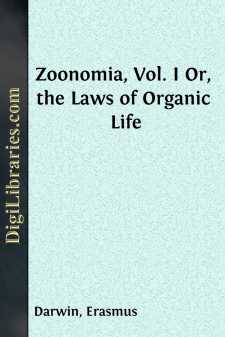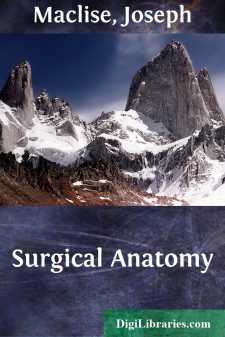Categories
- Antiques & Collectibles 13
- Architecture 36
- Art 48
- Bibles 22
- Biography & Autobiography 813
- Body, Mind & Spirit 142
- Business & Economics 28
- Children's Books 15
- Children's Fiction 12
- Computers 4
- Cooking 94
- Crafts & Hobbies 4
- Drama 346
- Education 46
- Family & Relationships 57
- Fiction 11829
- Games 19
- Gardening 17
- Health & Fitness 34
- History 1377
- House & Home 1
- Humor 147
- Juvenile Fiction 1873
- Juvenile Nonfiction 202
- Language Arts & Disciplines 88
- Law 16
- Literary Collections 686
- Literary Criticism 179
- Mathematics 13
- Medical 41
- Music 40
- Nature 179
- Non-Classifiable 1768
- Performing Arts 7
- Periodicals 1453
- Philosophy 64
- Photography 2
- Poetry 896
- Political Science 203
- Psychology 42
- Reference 154
- Religion 513
- Science 126
- Self-Help 84
- Social Science 81
- Sports & Recreation 34
- Study Aids 3
- Technology & Engineering 59
- Transportation 23
- Travel 463
- True Crime 29
Zoonomia, Vol. I Or, the Laws of Organic Life
by: Erasmus Darwin
Categories:
Description:
Excerpt
SECT. I.
OF MOTION.
The whole of nature may be supposed to consist of two essences or substances; one of which may be termed spirit, and the other matter. The former of these possesses the power to commence or produce motion, and the latter to receive and communicate it. So that motion, considered as a cause, immediately precedes every effect; and, considered as an effect, it immediately succeeds every cause.
The MOTIONS OF MATTER may be divided into two kinds, primary and secondary. The secondary motions are those, which are given to or received from other matter in motion. Their laws have been successfully investigated by philosophers in their treatises on mechanic powers. These motions are distinguished by this circumstance, that the velocity multiplied into the quantity of matter of the body acted upon is equal to the velocity multiplied into the quantity of matter of the acting body.
The primary motions of matter may be divided into three classes, those belonging to gravitation, to chemistry, and to life; and each class has its peculiar laws. Though these three classes include the motions of solid, liquid, and aerial bodies; there is nevertheless a fourth division of motions; I mean those of the supposed ethereal fluids of magnetism, electricity, heat, and light; whose properties are not so well investigated as to be classed with sufficient accuracy.
1st. The gravitating motions include the annual and diurnal rotation of the earth and planets, the flux and reflux of the ocean, the descent of heavy bodies, and other phænomena of gravitation. The unparalleled sagacity of the great NEWTON has deduced the laws of this class of motions from the simple principle of the general attraction of matter. These motions are distinguished by their tendency to or from the centers of the sun or planets.
2d. The chemical class of motions includes all the various appearances of chemistry. Many of the facts, which belong to these branches of science, are nicely ascertained, and elegantly classed; but their laws have not yet been developed from such simple principles as those above-mentioned; though it is probable, that they depend on the specific attractions belonging to the particles of bodies, or to the difference of the quantity of attraction belonging to the sides and angles of those particles. The chemical motions are distinguished by their being generally attended with an evident decomposition or new combination of the active materials.
3d. The third class includes all the motions of the animal and vegetable world; as well those of the vessels, which circulate their juices, and of the muscles, which perform their locomotion, as those of the organs of sense, which constitute their ideas.
This last class of motion is the subject of the following pages; which, though conscious of their many imperfections, I hope may give some pleasure to the patient reader, and contribute something to the knowledge and to the cure of diseases.
EXPLANATIONS AND DEFINITIONS....















